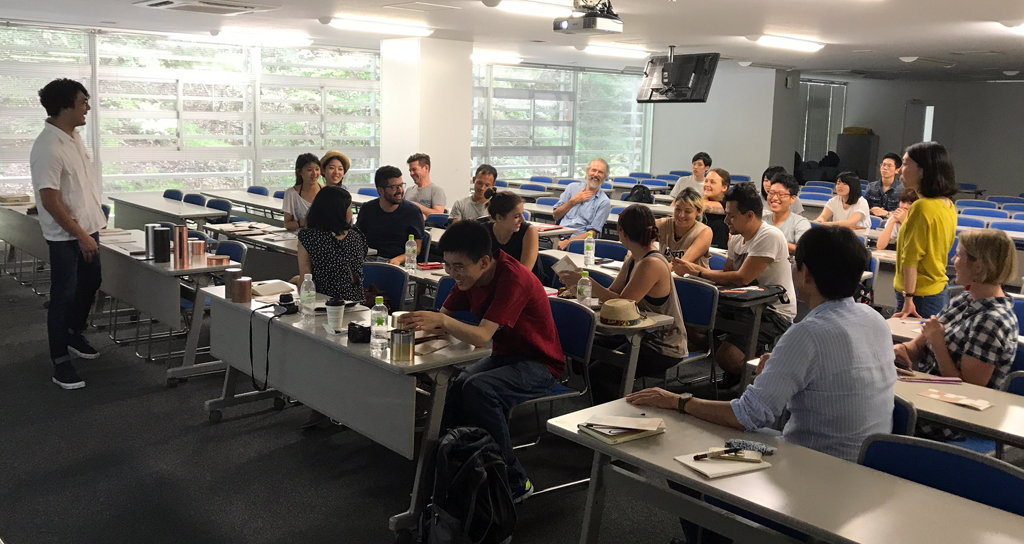Konnichiwa from Kyoto! Thus begins the field research trip for Designmatters’ Kyoto CULTURE // CRAFT studio.
The students and faculty arrived safely (albeit pretty jet-lagged) to Kyoto on Thursday evening, and settled easily into their guesthouse in central Kyoto. We were greeted by the Kyoto Seika University program directors — Mr. Manabu Kitawaki and Ms. Kumiko Nishijima – who welcomed us with a lovely meal at a traditional Japanese Izakaya restaurant. (Sashimi! Tempura! Yakitori!)
On Friday morning, we toured Kyoto Seika University with Mr. Ken Rodgers – a longtime staff member in the Office of International Education at KSU – who gave us the history and background of Kyoto from a crafts perspective. As Kyoto was spared from bombing during WWII, the mindset here is that traditional crafts embody the city’s history. Artisans have been preserving these special crafts for centuries and passing tacit knowledge to their descendants.
Celebrating its 50th anniversary next year, Kyoto Seika University is home to 3,000 undergraduate and graduate students across a variety of design disciplines, from garden design to paper making to a pioneering manga program.
Following an ice-breaking lunch with students and faculty from Kyoto Seika, we had our first lecture with Mr. Takahiro Yagi, a 6th generation tea caddy maker under the name Kaikado. (Tea caddies are practical containers used to keep tea fresh – and Mr. Yagi’s are particularly beautiful, crafted from tin, copper and brass that change in color over time.) While Kaikado tea caddies have a long history and tradition as a high quality good, Mr. Yagi opted to take an innovative approach to sell to a different market: he changed the branding to meet the needs of different cultures and demographics. Citing that the “younger generation in Japan is turned off by too much tradition,” he developed a new, stylish brochure and demonstrated “versatility” for the tea caddy by showing that it could be used for spices, coffee and pasta. While preserving the handicraft of his ancestors, he managed to boost sales and meet the demands of today’s global market.
The group of students and faculty visited Tsuruya Yoshinobu sweets shop, a traditional confectionary in Kyoto. After some delicious matcha tea and mochi with red bean paste, we walked to House Hosoo, a Kyoto-based textile company that has been in business since the late 1600s (Mr. Hosoo’s family has been making the same silk fabrics for more than 300 years – including attire for royalty, Kara Ori, traditional performances and plays, and kimonos and obis for wealthy Japanese families.) More recently, Japan saw great economic growth in the 1950s and 60s, and middle class families were able to afford kimono. However, by the mid-1980s, sales began to drop and western influences seeped into the lifestyle of many Japanese people. To battle low sales, Mr. Hosoo had to be forward-thinking: he developed a loom to create wider textile panels so the company could move into the interior design space. With that technology, he was able to sell his concepts to high-end hotels and designer storefronts, including the Ritz Carlton in Kyoto and Christian Dior in New York City. He has collaborated with Panasonic, Tumi, Oliver Peoples and Honda – with the mindset that he is making something new, but preserving the old.
Our students and faculty were inspired by the old and the new – the juxtaposition and the through-line. Seems like that might be a theme on this trip…
Keep up with the Kyoto CULTURE // CRAFT team on the dedicated project page —> designmattersatartcenter.org/proj/study-away-kyoto-culture-craft/


